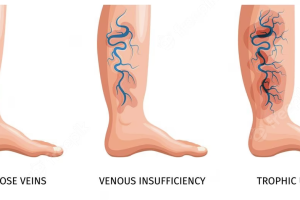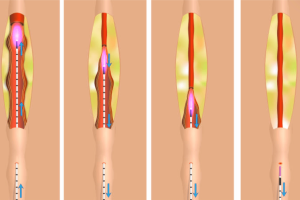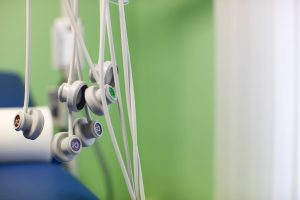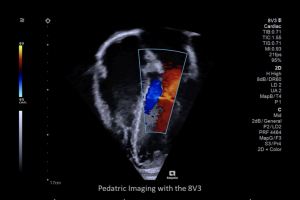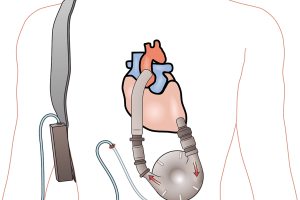The heart never takes a break. The heart is a strong muscle that never stops exercising, not for a minute. Every minute it needs blood, nourishment and oxygen. At Amarillo Heart Institute, we understand the importance of keeping your heart healthy and functioning at its best. We believe that a healthy heart is the foundation of a healthy life, and our goal is to provide you with all you need to achieve optimal heart health, a happier heart.
Ablation: Radiofrequency & Laser
Radiofrequency ablation and laser ablation are two minimally invasive techniques that are commonly used to treat venous diseases, such as varicose veins and chronic venous insufficiency, also used to treat some Cardiac Arrhythmia. Both procedures involve using heat to destroy the affected vein and redirect blood flow to healthier veins. Here’s a more detailed overview of each technique:
Radiofrequency Ablation
Radiofrequency ablation (RFA) is a procedure that uses heat generated by high-frequency radio waves to seal off and collapse a diseased vein. During the procedure, the patient is usually given local anesthesia to numb the area around the affected vein. The surgeon then inserts a catheter into the vein and uses ultrasound guidance to position it at the site of the damage. The catheter contains a small electrode that heats up and closes the vein as it is slowly withdrawn from the damaged area.
The heat generated by the electrode causes the walls of the vein to collapse, which stops blood from flowing through the damaged area. The body then naturally redirects the blood flow to healthy veins. The procedure usually takes around 30 to 45 minutes to complete and is performed on an outpatient basis, allowing patients to return home the same day.
RFA is considered safe and effective for treating venous diseases, with a success rate of up to 97%. Most patients experience minimal discomfort during the procedure and are able to return to normal activities within a few days.
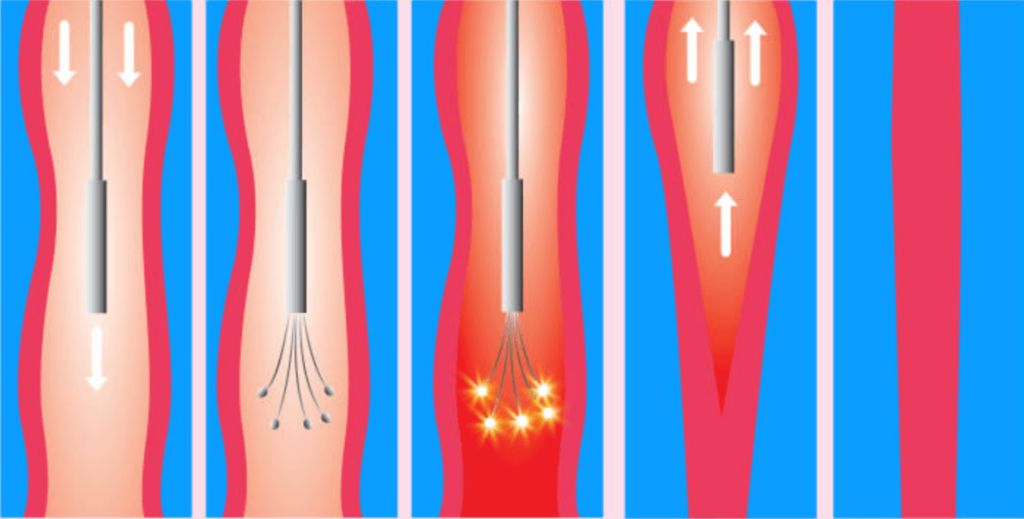
Laser Ablation
Laser ablation is another minimally invasive technique used to treat venous diseases. Like RFA, it involves using heat to destroy the affected vein and redirect blood flow to healthier veins. During the procedure, the patient is usually given local anesthesia to numb the area around the affected vein. The surgeon then inserts a catheter into the vein and uses ultrasound guidance to position it at the site of the damage. The catheter contains a fiber-optic laser that delivers energy to the affected vein, causing it to collapse and seal shut.
Laser ablation is also typically performed on an outpatient basis and takes around 30 to 45 minutes to complete. Like RFA, it is considered safe and effective, with a success rate of up to 98%. Patients may experience some discomfort or bruising after the procedure, but this typically resolves within a few days.



Additional Information
Those are minimally invasive techniques used to treat venous diseases such as varicose veins and chronic venous insufficiency. These procedures offer several benefits, including high success rates, minimal invasiveness, and fast recovery times.
However, it’s important to be aware of the risks and potential complications associated with these procedures. These may include bruising, swelling, discomfort, and more serious risks such as blood clots or nerve damage. Patients should discuss these risks with their healthcare provider and ask any questions they may have.
Before the procedure, patients will need to prepare by following specific dietary and medication restrictions. During the procedure, patients will receive local anesthesia and a catheter will be inserted into the affected vein. The catheter contains an electrode or fiber-optic laser that delivers heat to the damaged vein, causing it to collapse and seal shut. The procedure typically takes around 30 to 45 minutes and is performed on an outpatient basis.
Following the procedure, patients may experience some discomfort, bruising, and swelling, but these typically resolve within a few days. Patients will need to follow specific post-procedure instructions, such as wearing compression stockings and avoiding certain activities. Follow-up appointments with the healthcare provider may also be necessary to monitor recovery progress.
By choosing radiofrequency ablation or laser ablation, patients can experience relief from symptoms such as pain, swelling, and skin discoloration. If you’re considering one of these procedures, be sure to discuss your options with your healthcare provider to determine the best course of treatment for your individual needs.

